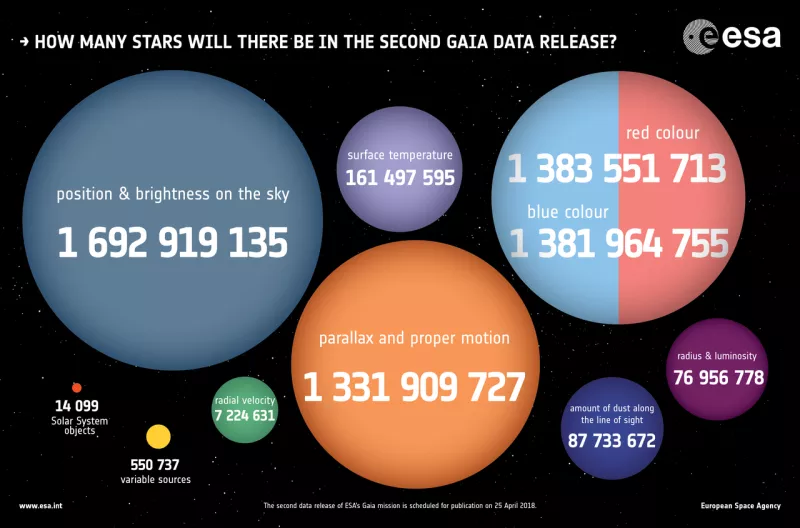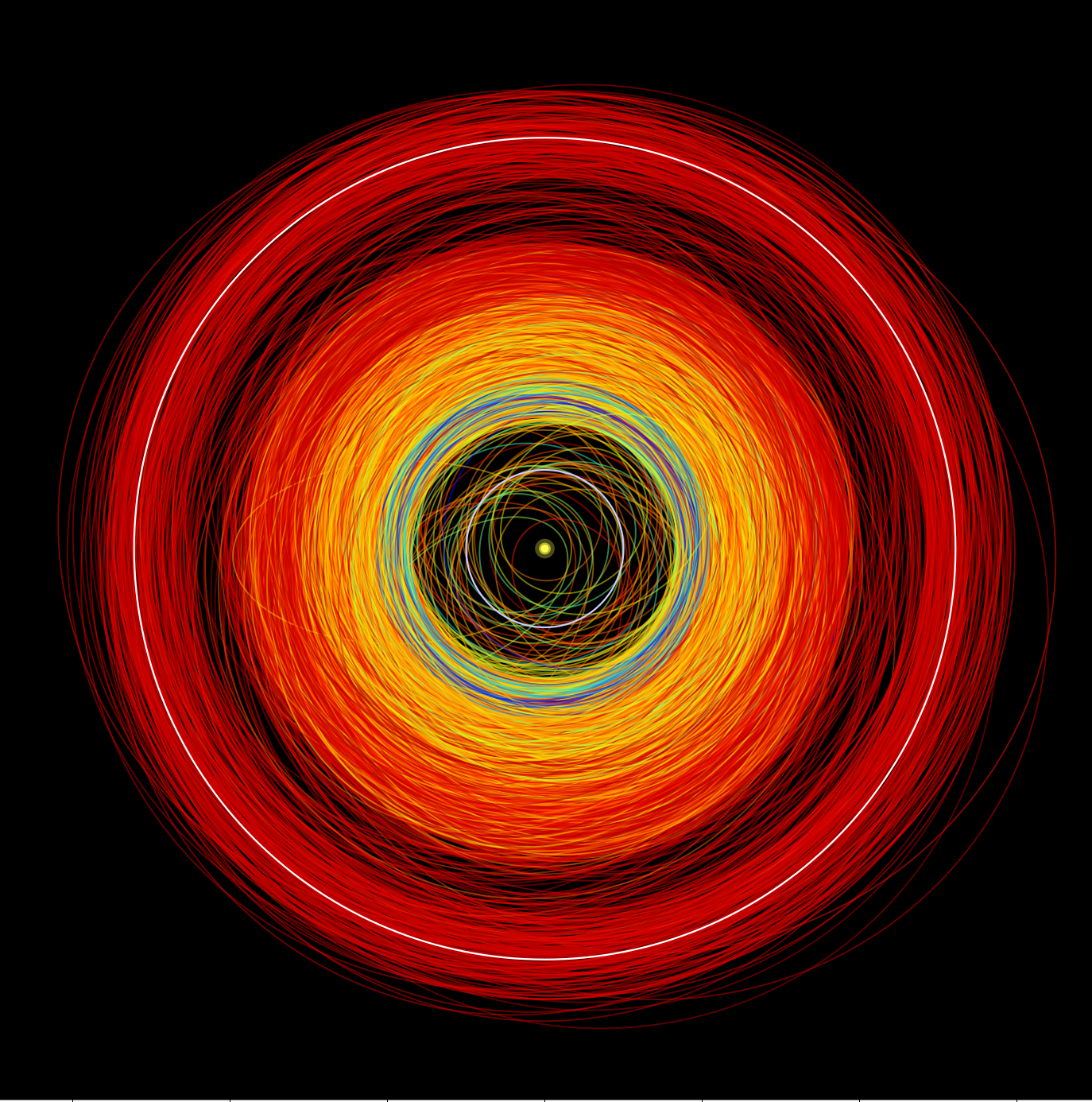The European Space Agency’s Gaia spacecraft team has dropped its long-awaited trove of data about 1.7 billion stars. You can see a new visualisation of all those stars in the Milky Way and nearby galaxies above, but you really need to zoom in to appreciate just how much stuff there is in the map. Yes, the specks are stars.
In addition to the 1.7 billion stars, this second release of data from Gaia contains the motions and colour of 1.3 billion stars relative to the Sun, as well as how the stars relate to things in the distant background based on the Earth’s position. It also features radial velocities, amount of dust, and surface temperatures of lots of stars, and a catalogue of over 14,000 Solar System objects, including asteroids. There is a shitload of data in this release.

Graphic: ESA
“Only time will tell what astronomers will make of this,” Gaia Science Operations Manager Uwe Lammers told Gizmodo.
And astronomers are already making something of it. Ronald Drimmel, astronomer at the Turin Astrophysical Observatory, posted this map of stars’ positions and their velocities. Our galaxy’s spiral arms have begun to emerge out of the data.
These are the spiral arms of the #MilkyWay, in velocity space, as seen by @ESAGaia. #GaiaDR2 pic.twitter.com/NmRpn9fHgn
— Ronald Drimmel (@rdrimmel) April 25, 2018
The ESA has also posted a number of other data visualisations. Here are the trajectories of almost 90 Milky Way satellites, including clumps of stars called globular clusters in blue, and orbiting galaxies in red. You can see the famous Large and Small Magellanic Clouds on the bottom right.
Map of the Milky Way containing its satellites.Image: ESA
And here are the orbits of the Solar System objects around the sun, coloured based on their brightness.

Asteroids around the Sun based on brightnessImage: ESA
This is of course the very, very beginning. Scientists hoping to understand our galaxy will still need to sift through, analyse, and crunch all this data in order to discover more about the universe. This will take years.
Once they have done that, it’s on to Gaia data release three, scheduled for the 2020s.
Gaia launched in 2013 and orbits the sun at the same rate as Earth, though it’s about 1.5 million kilometers farther away.
The link to the data is here, and a guide for what the data contains and how to use it here. There’s also a crapton more layperson-facing stuff here. Enjoy!
